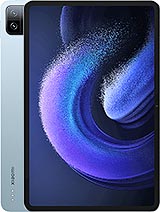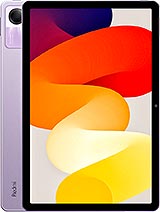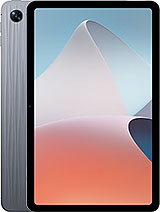Redmi Pad SE review

MIUI 14 Pad based on Android 13
The Redmi Pad SE runs on a familiar MIUI 14 based on Android 13. But it's not your ordinary MIUI 14; it's MIUI 14 Pad, which is a slightly tweaked version of the software suitable for tablets. There are some minor changes to the UI that allow for improved multitasking and overall better navigation.

As we already mentioned, the Redmi Pad SE has no biometric security, and you must rely on PIN/password or the not-as-secure 2D face unlock or Bluetooth accessory recognition. There is no always-on display option.
MIUI 14 is business as usual - all apps are on your home screens (an optional app drawer is available), and there is support for widgets, large folders, and quick shortcuts (tap and hold on an app). The Google Discover page has been optimized for the large screen. The device also supports stylus pen input, but there are no specific features that come with it.





Lockscreen • homescreen • Google Discover • notification shade • control center
Some apps support a two-column view to make use of the large screen and high resolution.


Settings menu and Files app with two-column view
The dock at the bottom of the screen has Recently Opened apps at the left corner, just like on most tablets these days.
MIUI also supplies the basic apps you may need to get you started - Camera, Gallery, Videos, Notes, Recorder, Weather, File manager, Security Manger.
The multi-tasking is the most important aspect of Redmi Pad SE, so let's talk about that.





Some of the default pre-installed apps
The task manager has been optimized for the big screen, and it shows a lot of app cards at once. A tap and hold on a card reveals options for Split Screen and Floating Window. There is also an always-visible Floating Window shortcut atop all cards.
When in the app, you will notice two gray lines on each side of the white gesture line. A swipe on those will reveal the dock together with the recently opened apps.
Split screen works as expected in both orientations, and you even get a Split Screen card if you go to the Task Switcher.
You can also have up to two floating windows at once. Oh, and those two can be active over two apps that are working in split screen, which means the Pad 6 supports up to 4 apps in multi-tasking mode on one screen. Nice!





Recent apps • split-view • floating window + split-view
There is a dedicated Features for Tablets menu in settings. Here, you can learn some neat multi-tasking gestures for the floating windows and split screen. Conference Tools is the final option, which is a limited sidebar available when watching videos. Unfortunately, the Connected Devices feature that allows the tablet to connect to your Xiaomi phone isn't available on the Redmi Pad SE.
As you can see, the software offers an abundance of features and customizations, and we had mostly positive experiences. However, the UI seems too heavy for the Snapdragon 680, so navigation was sometimes slower than expected. It was particularly noticeable with transitions and when opening apps. Animations, on the other hand, were always smooth and 90 fps.
Performance and benchmarks
The Snapdragon 680 chipset powering up the Redmi Pad SE provides enough performance for trouble-free and decently fast operations. However, there are more powerful alternatives on the market. The lack of 4K video recording shouldn't be an issue for a tablet in this class, though.
The chip is based on TSMC's 6nm manufacturing process and consists of 4x2.4 GHz Kryo 265 Gold & 4x1.9 GHz Kryo 265 Silver CPU cores. The GPU is Adreno 610.
As you can see, the Redmi Pad SE's Snapdragon 680 chip performs just as expected, and it appears to be just about average when compared to similarly priced tablets. Of course, the Xiaomi Pad 6 pulls ahead, but it's also a more expensive device.
Reader comments
- Sherly
- 31 May 2024
- X}{
Which one is better.. Redmi pad se or Samsung A9?..
- Mww
- 27 Mar 2024
- EqZ
8GB ram
- Anonymous
- 26 Mar 2024
- apL
4 to 8 GB









